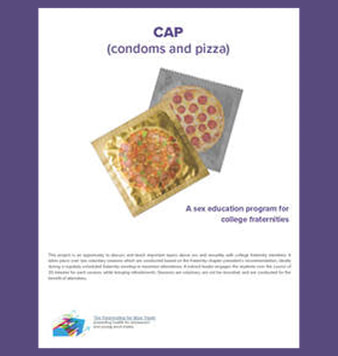Who We Are
Founded in 2013, we are a broad-based partnership of leaders and organizations from a range of disciplines that deal with issues that impact the health of adolescent and young adult (AYA) males. Our disciplines include medicine, psychology, education, and juvenile justice, among others. All of our work is informed through the involvement of young males themselves.
We are the only national US organization whose sole focus is on the health and wellbeing of males between the ages of 10 and 25. This positions PMY as the national leader in AYA male health, unique in its mission “to work with and on behalf of AYA males to optimize their health and ensure that they thrive.”
We are the only national US organization whose sole focus is on the health and wellbeing of males between the ages of 10 and 25. This positions PMY as the national leader in AYA male health, unique in its mission “to work with and on behalf of AYA males to optimize their health and ensure that they thrive.”
|
October 2023
PMY has released “Condoms and Pizza”, a new comprehensive program to educate college fraternity members about sexual health issues. US College students and fraternity members often lack understanding of these issues. Fraternities are one way of reaching college aged men about health issues, although typically very few programs exist to provide comprehensive education to them. A recent PMY study demonstrated a high degree of interest on the part of fraternity members in receiving this information. The “Condoms and Pizza” program’s core is the “digital toolkit,” a facilitator’s guide and curriculum for peers and near-peers to present 30-minute pizza sessions on contraception and contraceptive methods, sexually transmitted infections including HIV and HPV, consent and communicating with a sexual partner. The toolkit is available free of charge online. Sessions, free of charge, can be scheduled by contacting PMY directly at [email protected]. |
|
The Partnership for Male Youth is pleased to announce the availability of webcasts from the National Symposia on Adolescent and Young Adult (AYA) Male Health, held in late 2022. More detail on this can be found here.
The virtual series consists of five episodes covering a range of topics of interest to those who know or serve young males between the ages of 10 and 25. The topics, some of which are covered in less detail as a part of PMY’s recent podcast series, include –
|
Other Accomplishments
- Conducted an extensive organizational needs assessment consisting of over 150 interviews with national health leaders
- Assembled and launched a comprehensive online, open access database on what is known about adolescent and young adult (AYA) male health
- Sponsored the 2018 National Summit on Adolescent and Young Adult Male Health, which convened over 100 national and international leaders from a range of disciplines to build the foundation for the Campaign for Male Youth
- Since 2013, published a Weekly News Roundup containing summaries of scientific and popular literature related to AYA male health
- Produced and disseminated a health risk-assessment tool for AYA males and a companion resource for clinicians who serve them
- Produced and disseminated a Clinicians' Mental Health Screening Tool for Young Males
- Launched a robust initiative to engage young males in our programs and initiatives
- Dramatically expanded our coalition of collaborating organizations to include over 50 national and international organizations
Our Mission
The Partnership’s mission is to work with and on behalf of adolescent and young adult males to optimize their health and ensure that they thrive.
OUR VISION
The Partnership strives for a world in which adolescent and young adult males are valued as assets and where their health and wellbeing are promoted.
The mission of the Partnership is accomplished through eight principle endeavors:
The mission of the Partnership is accomplished through eight principle endeavors:
- Identifying and addressing the unmet health needs of AYA males through evidence-based approaches;
- Improving public awareness and advocacy for the health needs of AYA males;
- Building on promising and successful models to address the needs of AYA males;
- Engaging stakeholders and building partnerships in synergistic efforts to advance AYA male health;
- Developing resources for stakeholders and individuals working with AYA males;
- Engaging AYA males in advancing their own health and wellbeing;
- Addressing the underlying social determinants of health for AYA males; and
- Promoting health equity for AYA males by building on their strengths.

























